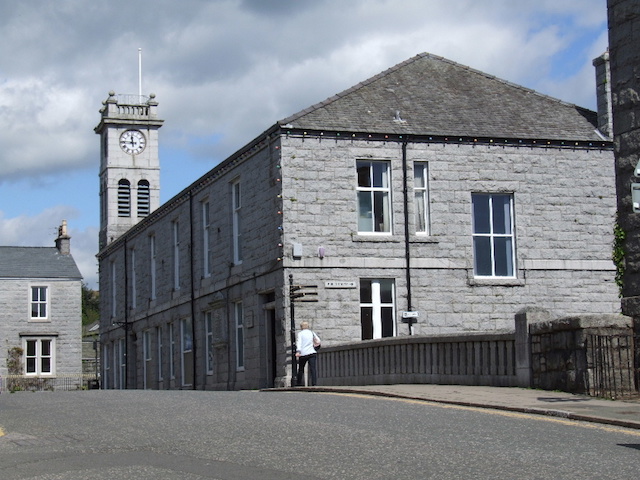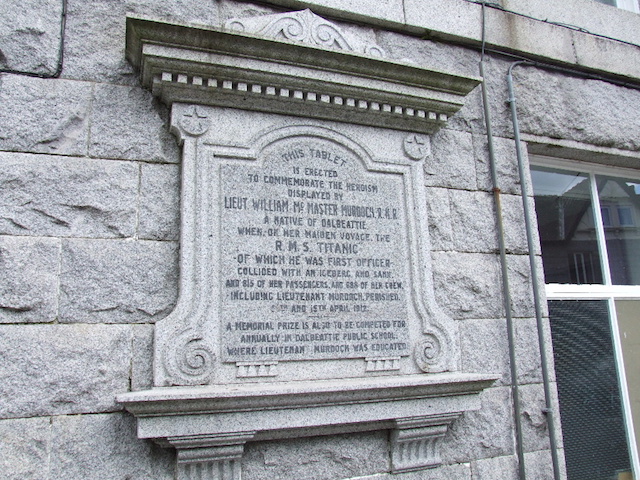The High Street is entered from the junction with John Street and Maxwell Street, and some of the most interesting buildings in the town can be seen at this junction. Set at the junction is “The Round House”, now a shop, but it was originally a rectangular house dating from 1800, refaced in the mid-1800’s with the striking bow frontage and castlated top. Across the road is the Bank of Scotland building, dating from the 1890’s, and just along Maxwell Street is the Maxwell Arms Hotel, built in the late 1700’s, with alteration made during the 1800’s and a granite extension in the late 1800’s.
The Town Hall has an imposing presence, built in 1861-2, the main hall is on the first floor and the ground floor originally housed shops and the Post Office, until the Post Office Building on the far side of the bridge was built in 1902. The Italianate style clock tower was added to the Town Hall at the end of the 19th Century. On the side of the Town Hall there is a Memorial to local hero Lieut. William McMaster Murdoch, First Officer of the Titanic, who went down with the ship on the 15th April 1912. If you continue down the High Street, over the Burgh Bridge, first built before 1850 to provide an alternative access to the ford in Water Street, you will note from the commemorative stone that it was widened in 1930. At the end of the bridge you will see the “Gingerbread” style Post Office built in 1902.
The rest of the High street is a mixture of late 18th and 19th Century vernacular building, as you walk down it see if you can spot our “closes”, narrow entries which lead to houses and flats behind and above the shops. A notable exception is when you reach the Cross. On the left-hand side, the corner of the High Street and Mill Street is a block of buildings, constructed in 1883. The block was built at an angle at the request of the local doctor, who lived further up Mill Street, in Alma House, so as not to impede his view of the High Street, though later building has now obscured the all important view. The block has a small cast iron “Frenchy” tower on the roof, perhaps best viewed from the Cross itself, a public Fountain, sadly no longer working, that was erected in Polished Grey and Pink Granite to commemorate Queen Victoria’s Golden Jubilee in 1887. Just mind the traffic!
Alma House on Mill Street, was built in the mid-1800’s, with a three storey Italianate Tower added on about 1860. Opposite Alma House can be seen the 1930’s Art Deco Cinema, now a furniture store. Further up Mill Street, can be seen Park Church, built in 1842, rebuilt in 1881, still used for regular worship as the local Baptist Church.
At the bottom end of the High Street is the imposing Royal Bank of Scotland, built in 1858 and faced with Polished Granite in the 1930’s. It stands opposite the junction with Southwick Road, and from the junction can be seen the Royal British Legion which was built in 1896-7, and was formerly the Conservative Club, as well as our local Museum. Evidence of Cart Arches can be seen on the Museum frontage and also just round the corner on the High Street.
(Article contributed by Erica Johnson)


